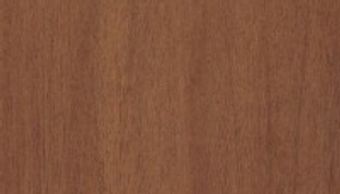Welcome
There's much to see here. So, take your time, look around, and learn all there is to know about wood. We hope you enjoy our site and take a moment to drop us a line.
INFORMATION ABOUT WOOD I WORK WITH
BLACK WALNUT
SAPELE OR RIBBON SAPELE
BLACK WALNUT

Black walnut is an American walnut distributed in the Eastern United States. Grain is usually straight, but can be irregular. Its good working characteristics, coupled with its rich brown coloration puts the wood in a class by itself among temperate-zoned hardwoods.
PURPLEHEART
SAPELE OR RIBBON SAPELE
BLACK WALNUT

Purpleheart grows across a wide range in Central and South America with 23 recognized species When freshly cut the heartwood of purpleheart can be a dull grayish/purplish brown. Upon exposure—usually within a few days—the wood becomes a deeper eggplant purple. Sometimes called amaranth, this colorful Latin American hardwood is tremendously popular for furniture and other designs that call for a unique splash of color.
SAPELE OR RIBBON SAPELE
SAPELE OR RIBBON SAPELE
SAPELE OR RIBBON SAPELE

Usually pronounced (sah-PELL-ey) or (sah-PEEL-ey). Sapele is a commonly exported and economically important African hardwood species. It’s sold both in lumber and veneer form. Heartwood is a golden to dark reddish brown. Color tends to darken with age.
AFRICAN PADAUK
AFRICAN PADAUK
SAPELE OR RIBBON SAPELE

African Padauk: Native to Central and West Africa, African Padauk is celebrated for its striking reddish-orange heartwood, which gradually deepens to a rich, dark brown over time. Its grain is usually straight but can be interlocked, and its texture is course yet uniform. Historically, it was known as "vermillion wood" and prozed in ancient African carvings and ceremonial items.
BIRDSEYE MAPLE
AFRICAN PADAUK
BIRDSEYE MAPLE

Birdseye Maple: Primarily found in North America, especially Canada, Birdseye Maple is a unique figure variant of hard maple. Its creamy white to light golden color is decorated with tiny, swirling "eyes" that resemble bird tracks. Highly prized in fine furniture and instruments, it was a favorite of the Shakers, who admired its beauty despite its subtlety.
LEOPARDWOOD
AFRICAN PADAUK
BIRDSEYE MAPLE

Leopardwood has a very conspicuous flecking that gives this wood its namesake. The wood itself is a medium to dark reddish brown with grey or light brown rays, which resemble the spots of a leopard.
ZEBRAWOOD
KIAAT (AFRICAN TEAK)
ZEBRAWOOD

Zebrawood, originating from West Africa, is a light brown or cream color with dark blackish brown streaks vaguely resembling a zebra’s stripes. Its grain is usually wavy or interlocked, adding to its dynamic appearance. The wood is strong and stiff, with a fairly high density.
It was once used in the dashboards of luxury cars like Rolls-Royce, earning it a reputation for exotic opulence.
CUMARU
KIAAT (AFRICAN TEAK)
ZEBRAWOOD

Cumaru lumber is extremely stiff, strong, and hard, lending itself well to a variety of applications. Cumaru is also called by the name Tonka Bean and Brazilian Teak. Heartwood tends to be a medium to dark brown, sometimes with a reddish or purplish hue; some pieces may have streaks of yellowish or greenish brown. It's famously durable and dense, making it a premier choice for decking.
KIAAT (AFRICAN TEAK)
KIAAT (AFRICAN TEAK)
KIAAT (AFRICAN TEAK)

Kiaat is closely related to African Padauk (both are species of the Pterocarpus genus), sharing its characteristics of being durable, extremely stable and easy workability. The wood is renowned for its great bug and termite resistance.
AMERICAN CHERRY
AMERICAN CHERRY
KIAAT (AFRICAN TEAK)

The beautifully figured version of American/Black Cherry.
Black Cherry is an important domestic hardwood, long associated with fine furniture and a favorite of many master craftsmen. Grown mainly in the eastern United States, American Cherry is a warm wood that deepens in color with age and exposure to light.
FLAMING BIRCH
AMERICAN CHERRY
FLAMING BIRCH

Flame Birch is not a species in and of itself, but rather the name given to Yellow Birch with a beautiful flamed figure across the grain. Yellow Birch heart wood can vary from pale yellow to a light, muted reddish brown; sapwood is grayish-white.
WHITE OAK
AMERICAN CHERRY
FLAMING BIRCH

White Oak has long been considered one of the preeminent hardwoods of Central & Eastern America. The trees commonly live for hundreds of years, if left undisturbed. The color of the heartwood can vary from a light golden tan to a light to medium brown. The grains are straight.
Myers of Maine Woodworks, LLC
Augusta ME 04330
Copyright © 2025 Myers of Maine Woodworks - All Rights Reserved.